Whether you run a software studio or an artisanal ice cream stand, you need a way to manage your tasks and to-dos. For many small teams, tasks can be spread across emails, Slack messages, calendar entries, and a pile of sticky notes.
Whether it seems like it or not, these are project management tools — they just aren’t the best project management tools. The good news is that upgrading to real small business project management software is easier (and cheaper) than ever, and this guide will help you pick the best project management tool for your small team. Say goodbye to missing deadlines because you lost a Post-it, and hello to getting more done with less work.
Why project management matters
Just because your team is small doesn’t mean you don’t have a million tasks to juggle. Quite the opposite, in fact — with fewer people, everyone has to do more and be on top of their deadlines and deliverables, because there’s no one else to take up the slack.
So why don’t more small teams use collaborative project management software? That would be because it feels intimidating. When people hear “project management,” they tend to think “PROJECT MANAGEMENT!” in all caps, but what should be scarier is continuing to operate without it.
Project management challenges for small businesses
Trying to improvise task management for small businesses is a bit like trying to improvise flying a commercial jet — everything works fine right up until it doesn’t, and then things go from bad to worse, and fast.
A few challenges small businesses experience with projects include:
- Planning and scheduling. Without a plan, there’s no way to make sure you have enough bandwidth to cover everything that needs to get done. Project management tools help you identify these gaps while also aligning your team on their part of the plan.
- Reaching mental fatigue. Trying to figure out what to work on next creates a ton of anxiety and stress, not to mention wasted time. Project management makes it easy to know what’s next.
- Hitting deadlines. Without a way to visualize important deadlines, things can easily slip through the cracks. It’s easier to ensure due dates don’t pass you by if you use a project management tool to track the deadline and what needs to be done to meet it.
- Keeping work aligned. Without a project management tool, it’s hard to coordinate small teams so that everyone is working toward a shared goal. With the right small business project management software, everyone can be on the same page at all times.
- Evaluating effectiveness. Many small businesses may not realize how inefficient processes are costing them time and resources. Effective project management helps business owners and team leaders figure out if their team is firing on all cylinders or just limping along.
In short, project management is the secret sauce that turns chaos into getting things done.
So, to sum up why you should switch to small business project management software yesterday: It helps you get more done in less time and with fewer resources, keeps customers and employees engaged and happy, saves you money and mental energy, and helps small teams grow into globe-spanning brands. You just have to find the right software.
Key features to look for in small business project management software
Finding the best project management software for your business is easier than it seems. Really, you only need to answer a few key questions:
- Is this software as simple or complex as I need it to be?
- Does it work with my existing tools and processes?
- Does it fit my budget?
Simple, right? And to make it even simpler, here are some small team project management software features and benefits you can use to compare options, along with the best way to evaluate each one.
| Feature | What is it? | Why is it important? | How to evaluate tools |
|---|---|---|---|
| Easy to learn | Effective project management software enables users to get started quickly with minimal training and onboarding. | Complex tools often go unused, so keeping learning curves low helps with adoption. | Open the tool and see how far you can get without referring to a tutorial or documentation. |
| Budget-friendly | Project and task management tools don’t have to break the bank. | Project management tools can help businesses save money, but if they cost more than they save, then they aren’t really helping. | Look for free tiers before diving in, ensuring the tool works for you before committing to a paid plan. |
| Flexible project tracking | It’s important to be able to structure projects however you need: from just an overview down to tasks, subtasks, or even further. | Flexibility helps adoption and meets your team where they are. It also helps with visibility and accountability. | Create a simple diagram of one of your projects and review the tool to ensure it can support that diagram. |
| Collaboration tools | Comments, notes, conversations, file sharing, and other built-in tools help your team work together effectively. | Keeping as much work as possible in one tool helps everyone work faster and stay on the same page. | Determine how you currently share work among team members and assess tools to identify ones with similar functions. |
| Work automation | Workflows, triggers, and integrations can minimize time spent on repetitive tasks. | Automations free team members from having to keep up with minutiae. Automated project management is an efficient approach to keep everything going. | Compare the rules available by default to what you would need to (and what you can) build. Be sure to compare the number of automations you receive per month across different plans. |
| Integration with your existing tools | Mobile views, plug-ins with your team’s existing tools, and the ability to change tools over time are all crucial for smooth growth. | The more your toolbox works together, the easier it is to manage everything. | Identify the tools you use and look for plug-ins or native support for those tools. Bonus: Check if it supports the next step up as well, for when you grow. |
| Visual and intuitive projects | Kanban boards, task lists, calendars, and other tools let you quickly see what’s happening. | Being able to see what comes next at a glance helps your team spend less time on organizing and more time on doing. | Compare the project views that each tool offers and select the one that feels most intuitive and easy for you to use. |
| Easy reporting | Systems work smarter with time tracking, efficiency reporting, and visibility into who did what when. | This is the “M” in “PM.” Without being able to generate reports, you miss out on a lot of insight into how to improve. | Look for built-in reports, dashboards, and customization options. Make sure they’re easy to use and give you the information you need. |
Not every one of these features will be important to every business, so don’t worry about finding small business project management software that checks every box. Instead, determine what matters to you and create an evaluation plan that caters to your needs. Then, look through our list of top project management tools for small teams, pick out a few that seem interesting, and use the evaluation criteria to zero in on the one that works best for you and your small business.
8 best project management tools for small teams
1. Asana
Small teams looking for the lightest-weight task management software that can grow with them into a robust project management solution with strong integration support can consider Asana.
Created by Facebook cofounder Dustin Moskovitz and Google engineer Justin Rosenstein in 2008, the solution now has over 140,000 paying customers in 200-plus countries.
Best for: Content calendars, product launches, creative teams that don’t like complex project management, and simple visual task tracking.
Developer: Asana, Inc.
Key features:
- Built around a simple task list
- Integrations with almost every popular application and tool
- Multiple project views: Kanban, task list, timeline, Gantt, calendar
- Some offline functionality
- Built-in task dependencies and milestones
- Simple automation, reporting, and goal tracking
- Custom fields and templates are supported
Pros:
- Very generous free plan
- Strong integration support
- Large community of users and development partners
- Room to grow as project needs evolve
- Regular feature enhancements and additions
Cons:
- Advanced features can be complex and overwhelming
- Steep cost scaling for paid plans
- Customer support can be slow
- Some feature requests and bugs have been ignored for years
Plans/Pricing:
- Personal: Free
- Up to 10 users
- Unlimited tasks, projects, messages, and files (up to 100 MB per file)
- List, board, and calendar views
- Starter: $10.99 per user
- Asana AI
- AI Studio
- No seat limits
- Timeline and Gantt views
- Workflow builder, custom fields, forms, unlimited automations, custom project templates
- Advanced: $24.99 per seat
- Goals
- Unlimited portfolios
- Workload, integrated time tracking, approvals, and proofing
- Integrations with BI tools like Salesforce, Tableau, and Power BI
G2 rating: 4.4/5
2. Jotform
Small teams looking for an intuitive solution that helps streamline workflows in a visual way, with simple integrated forms and a robust mobile option, can turn to Jotform Boards.
With Jotform Boards, small businesses can create boards from scratch or connect forms to automatically turn submissions into actionable tasks that are centralized and easily accessible. With collaboration at its core, Jotform Boards enables teams to share boards, assign tasks, add comments for better communication, and track changes through the Activity Log.
Users can also tailor Jotform Boards to fit their business processes (i.e., editing board groups to reflect workflow steps) and company branding (i.e., personalizing their board’s background theme). Jotform Boards users can even track and manage tasks from anywhere, at any time, thanks to its full mobile responsiveness.
Best for: Turning support requests or orders into tasks, mobile-first teams, businesses already using Jotform or who like the simplicity of forms, nontechnical teams, and teams that need to solicit feedback from customers or other teams.
Developer: Jotform, Inc.
Key features:
- Kanban-style boards with drag-and-drop functionality
- Automated task creation from form submissions
- Customizable fields
- Advanced but easy search and filter capability
- Fully integrated into the Jotform family of tools
- Native board sharing, task assignment, commenting, and collaboration
- Highly customizable look and feel
- Mobile-responsive design
Pros:
- Very cost-effective
- Incredibly simple to learn and start using quickly
- Easy to integrate and use, especially for teams already using other Jotform products
- User-friendly and intuitive, especially for nontechnical users
- Lightweight and efficient
- Easy to pull in tasks from outside the project team (i.e., from users or customers)
Cons:
- Limited advanced project management features
- May not scale well to enterprise teams or large, complex projects
- Limited offline capabilities
- Simplified reporting and analytics (may be a pro for teams that want something easy)
Plans/Pricing:
- Starter: Free
- Unlimited boards
- Up to five forms with 100 submissions
- One user per team
- 100 MB of available storage
- Bronze: $34
- 25 forms and 1,000 submissions
- 1 GB of storage
- No Jotform branding on forms
- Silver: $39
- 50 forms with 2,500 submissions
- 10 GB of storage
- 50 AI Agents with 2,500 conversations
G2 rating: 4.7/5
3. Trello
Trello is an excellent option for individuals and very small teams with simple projects who want something straightforward and no-nonsense that doesn’t require any training.
Atlassian, primarily known for its developer-oriented tools like Jira and Confluence, acquired Trello in 2017 as a lightweight option for solo developers and small teams.
Best for: Teams already using Atlassian products, solopreneurs with minimal project needs, and remote teams that need collaborative work tools.
Developer: Atlassian
Key features:
- Kanban and card-based interface built on agile development principles
- Customizable workflows with the ability to embed components like files, checklists, and due dates on cards
- Additional Power-Ups are available to extend features and capabilities
- Team and individual boards with easy collaboration
- AI and automation services
Pros:
- One of the simplest options available
- High flexibility and very little structure (can also be a con for teams who want more)
- Strong community support and resources
- Generous free version
Cons:
- Limited advanced project management features
- Easily cluttered when projects get big
- Minimal dependency management
- Basic reporting
- In-app purchases for additional functionality
Plans/Pricing:
- Free: Free
- Up to 10 collaborations per Workspace
- 10 boards per Workspace
- Unlimited storage (up to 10 MB per file)
- 250 Workspace automation commands
- Standard: $5 per user
- Unlimited boards
- Planner, advanced checklists, card mirroring, custom fields, and checklist colors
- Unlimited storage (250 MB per file)
- 1,000 automations per month
- Premium: $10 per seat
- Atlassian Intelligence AI platform
- Calendar, timeline, table, dashboard, and map views
- Unlimited Workspace commands
- Templates, collections, and observers
G2 rating: 4.4/5
4. ClickUp
ClickUp made a splash in 2017 and has been recognized for its rapid growth and innovation.
Teams that are willing to trade complexity for an all-in-one solution that manages documents, chat, tasks, and projects might gravitate toward ClickUp. This solution is also appealing for technical teams not afraid to get their hands dirty.
Best for: End-to-end product development, highly customized advanced project processes with a lot of overhead, and building company-wide single sources of truth.
Developer: Mango Technologies, Inc.
Key features:
- Multiple views and the ability to customize them
- Built-in documents, chat, whiteboards, and file storage
- High level of customization and automation
- Large pool of integrations and plug-ins
- Time tracking and goal-setting
Pros:
- Can be customized for any team or project
- Integrates multiple tools in one place
- Active development and fast feature rollout
- Strong support community
Cons:
- Very steep learning curve
- Interface can feel overwhelming to new users and require significant training
- Can struggle with large, complex projects (e.g., missed automations, sluggish responses, issues loading)
- Mobile app is more confusing than desktop app
Plans/Pricing:
- Free Forever: Free
- Unlimited users
- 60 MB storage
- Unlimited tasks
- One form
- Unlimited: $7 per user
- 2 GB of storage per user
- Unlimited folders, spaces, integrations, Gantt charts, custom fields, chat messages, and forms
- Guests with permission management
- Goals and portfolios
- Resource management
- Business: $12 per seat
- Google SSO
- Unlimited storage, teams, message history, mind maps, activity and timeline views, dashboards, and whiteboards
- Automation integrations
- Workload management
G2 rating: 4.7/5
5. monday.com
monday.com was founded in 2012 and is an ideal solution for larger teams that need customizable project workflows and are willing to put up with some complexity to have them. Businesses that want to integrate several teams or departments with unique needs will find that monday.com is a solid option.
Best for: Managing multiteam deliverables, companies that want to combine their CRM with their project management, and marketing campaigns with multiple stakeholders.
Developer: monday.com, ltd.
Key features:
- Customizable boards and views built around tables
- Additional views like Kanban, Gantt, and calendar
- Automation platform for repetitive tasks
- Large pool of integrations and plug-ins
- Built-in time tracking and workload management
- Ability to template out common projects and tasks
Pros:
- Visually appealing and intuitive interface
- High level of customization
- Strong integration capabilities and robust API
- Scales with team size and project complexity
Cons:
- Advanced features are paywalled
- Price scales fast with team size
- Can suffer from performance issues with large boards
- Steep learning curve for anything beyond basic projects
Plans/Pricing:
- Free: Free
- Up to two seats
- Up to three boards
- Unlimited documents
- Eight column types and over 200 templates
- Starter: $9 per user
- Unlimited external viewers and items
- 5 GB file storage
- 500 AI credits per month
- Dashboards for one board
- Standard: $12 per seat
- Timeline, calendar, and Gantt views
- Guest access
- 250 automation actions and 250 integration actions
- Dashboards can combine five boards
- Pro: $19 per seat
- Private boards
- Chart view
- Time tracking and formula columns
- 25,000 automation actions and 25,000 integration actions
- Dashboards can combine 20 boards
G2 rating: 4.7/5
6. Wrike
Midsize and larger businesses managing complex projects that require advanced reporting, intricate analytics, and cross-functional collaboration may choose Wrike for their project management.
Founded in 2006 and acquired by Citrix in 2021, Wrike was recognized with a G2 Best Software Award in 2025.
Best for: Marketing campaigns with complex approval workflows, companies using Salesforce and Adobe, and comprehensive executive dashboards.
Developer: Wrike, Inc.
Key features:
- Multiple project views
- Advanced reporting and analytics tools
- Time tracking and workload management
- Large pool of integrations, including enterprise options like Salesforce and Adobe Creative Cloud
- Resource and budget management
- Enterprise-grade security
- AI-powered task prioritization
Pros:
- Robust and feature-rich
- High level of customization and workflow development
- Highly scalable
- Enterprise-ready
Cons:
- Becomes expensive quickly
- Steep learning curve and time-intensive setup
- Paywalled features
Plans/Pricing:
- Free: Free
- Project and task management
- Board and table views
- Active task limitations
- Team: $10 per user
- Up to 15 users
- Folders and nested projects
- Unlimited projects, tasks, and subtasks
- One shared space and dashboard per account
- Unlimited custom fields
- 50 automation actions per user
- Unlimited free viewers
- Business: $25 per seat
- Up to 200 users
- Project blueprints
- Unlimited request forms, shared spaces, and dashboards
- Approvals and guest approvals with file and video proofing and DAM integrations
- Resource and capacity planning
G2 rating: 4.2/5
7. Any.do
Founded over a decade ago, Any.do is great for individuals and very small teams who think in tasks rather than projects and want a minimal approach to task management.
Best for: Solopreneurs combining personal and work tasks, freelancers managing multiple small projects, and anyone working mostly from their calendars.
Developer: Any.do, Ltd.
Key features:
- Task creation with subtasks and reminders
- Google and Outlook calendar integrations
- Shared tasks and lists across collaborators
- Recurring tasks and location-based reminders
- Daily planner, focus mode, and integration with voice assistants
- Customizable widgets
Pros:
- Simple and user-friendly
- Synchronizes across almost any device
- Multiple-language support
- Free tier is enough for most individuals
Cons:
- Very limited project management
- Lacking some common integrations
- Best features locked behind paid plans
- Slow customer support
- Premium plans are expensive for what’s offered
Plans/Pricing:
- Personal: Free
- One user
- Tasks and lists
- Reminders
- Calendar
- Daily planner
- Starter: $4.99
- One user
- Recurring tasks
- WhatsApp and location-based reminders
- AI integration
- Color tags
- Teams: $4.99 per seat
- Collaborative workspace
- Unlimited project boards and team members
- Workflow templates
G2 rating: 4.2/5
8. Nifty
Nifty has been based in the US since 2017 and is recognized for its innovative handling of collaboration and project management from one interface.
Small- to medium-sized teams looking for a simple yet powerful option that falls somewhere in the middle and has most necessary functions may choose Nifty.
Best for: Collaborating and managing projects from one place, teams that have outgrown simple checklists but don’t need a heavy platform, and creative and small-product teams.
Developer: Nifty Technologies, Inc.
Key features:
- Multiple project views
- Integrated chat, tasks, documents, and files
- Milestone and time tracking
- Customizable workflows and templates
- Integration with Google Workspace, Teams, and more
- Client management features
Pros:
- Combines a lot of common features in one platform
- User-friendly and simple
- Generous free plan
- Fairly scalable for small and mid-sized teams
Cons:
- Limited integrations compared to other options
- Mobile app is not the best
- Occasional performance issues and limited support
- Advanced features locked behind paywalls
Plans/Pricing:
- Free: Free
- Unlimited team members
- 100 MB of storage
- Two active projects
- All core features (e.g., tasks, milestones, documents, files, and chat)
- Personal: $7
- 100 GB of storage
- 40 projects
- Two guests and clients per paid seat
- Time and budget tracking
- Custom fields
- Pro: $10 per seat
- 250 GB of storage
- 100 projects
- Five guests and clients per paid seat
- Workflow automation and file proofing
- Cross-project overviews
- Business: $16 per seat
- Unlimited storage, projects, and guests or clients
- Goal tracking
- Team workload
- Custom roles and permissions
G2 rating: 4.7/5
The best small business project management software
The right project management software for your small business isn’t just one more tool to stick in your toolbox; it’s the work van that lets you get all your tools to the jobsite on time. Good project management will help you avoid missed deadlines, keep your team and customers happy, save you money, and free up a lot of bandwidth and energy, allowing you to focus on doing rather than managing. It is, without a doubt, the most important tool you can start using.
Sound like a lot of pressure? Don’t worry: Switching project management software may not always be the most fun task, but it’s usually straightforward and simple. And since most platforms offer pretty hefty free plans, you can try some out and keep switching until you find one that works exactly the way you want it to.
If you’re still hesitant, give Jotform Boards a try. It’s lightweight enough for you to get started immediately without a lot of training or setup, but still powerful enough to let you manage your small business like the CEO of a Fortune 500 company . . . just without the corporate jet and three-martini lunches.
This guide is tailored for small business owners, solopreneurs, and managers of compact teams who juggle multiple tasks and projects daily.

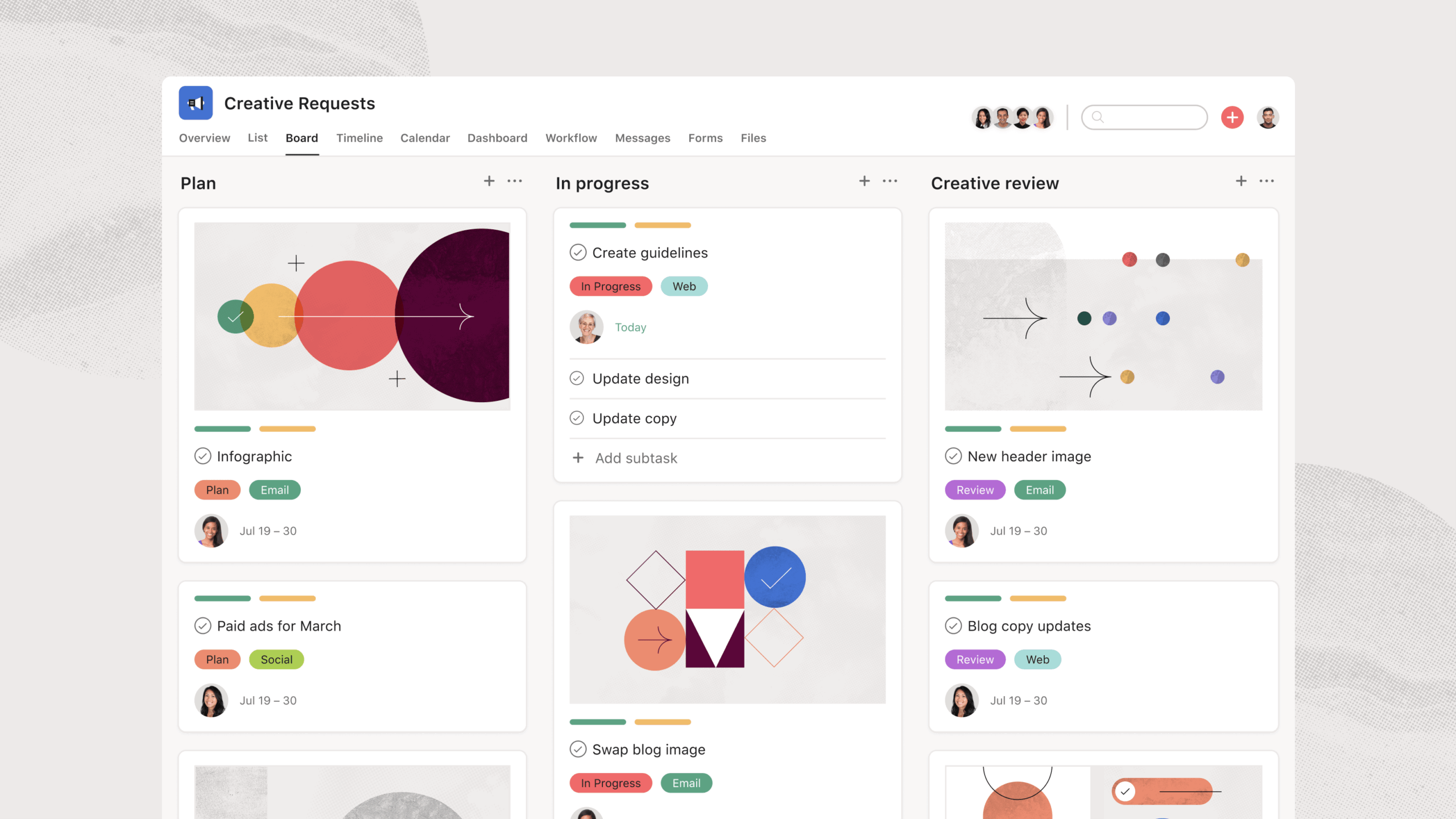
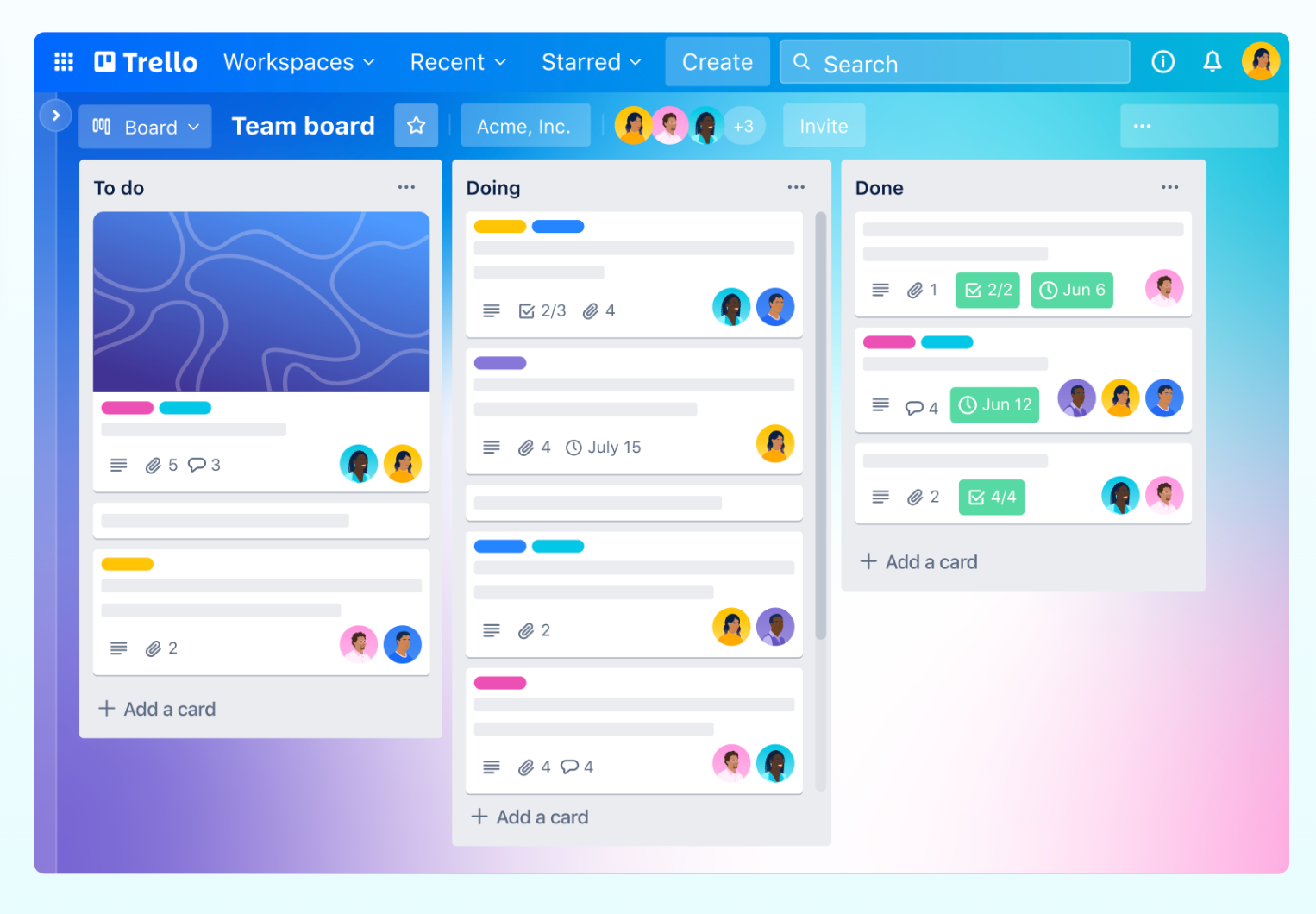
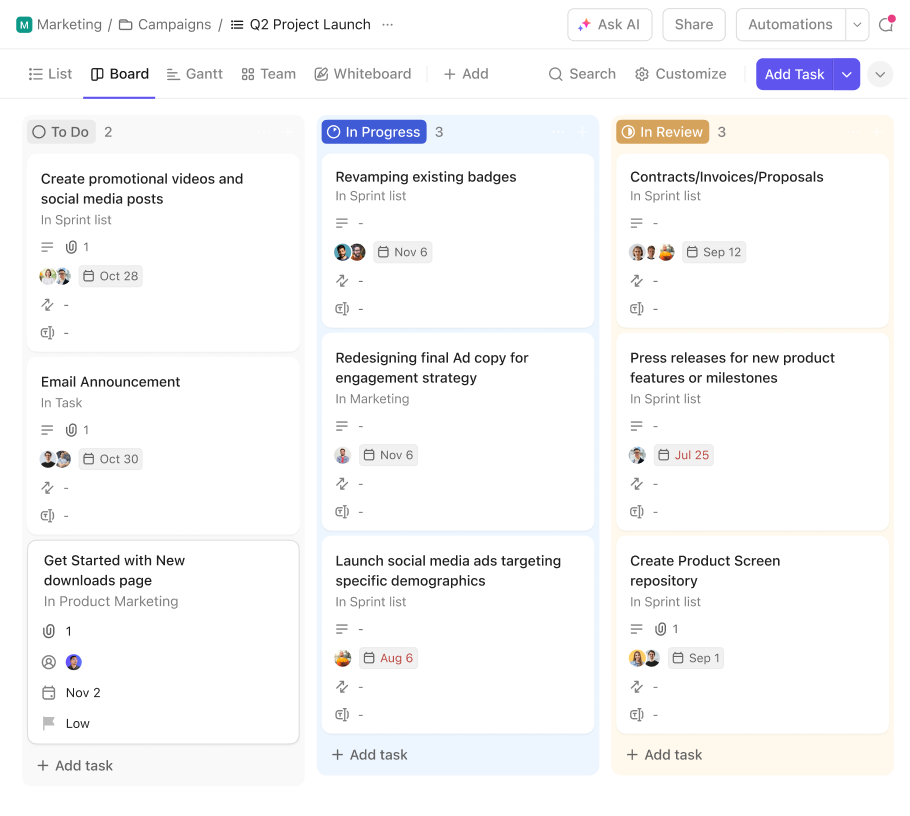

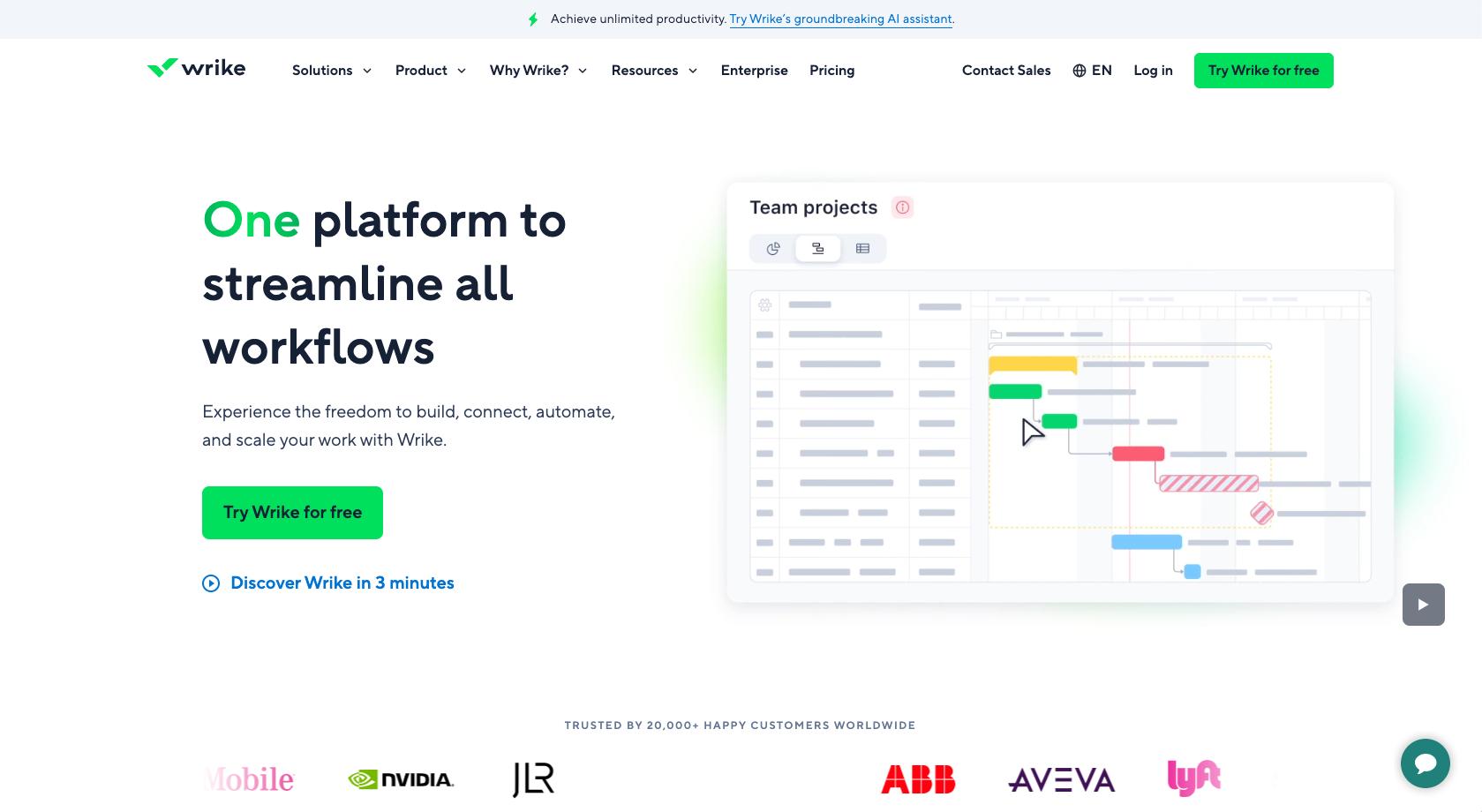
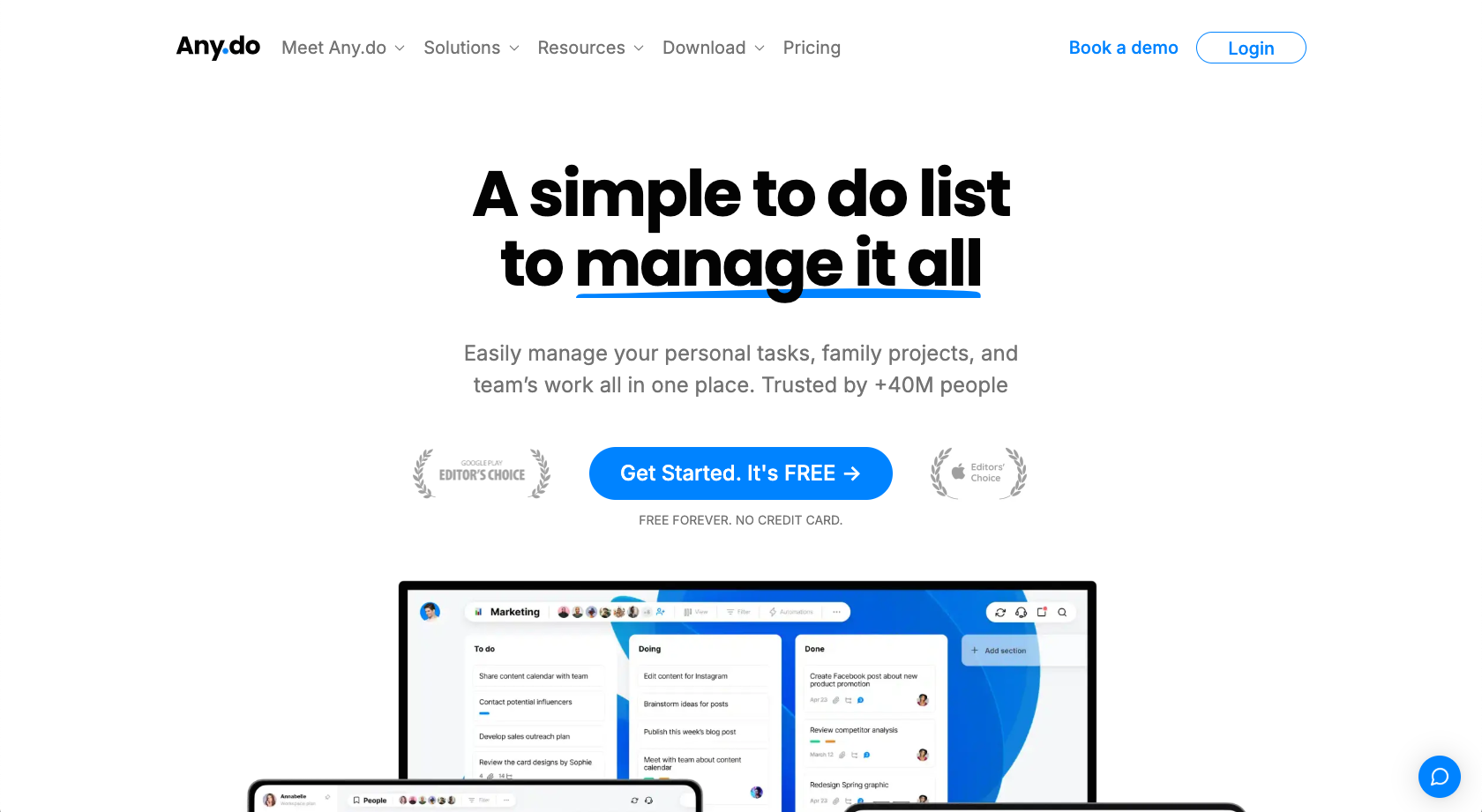
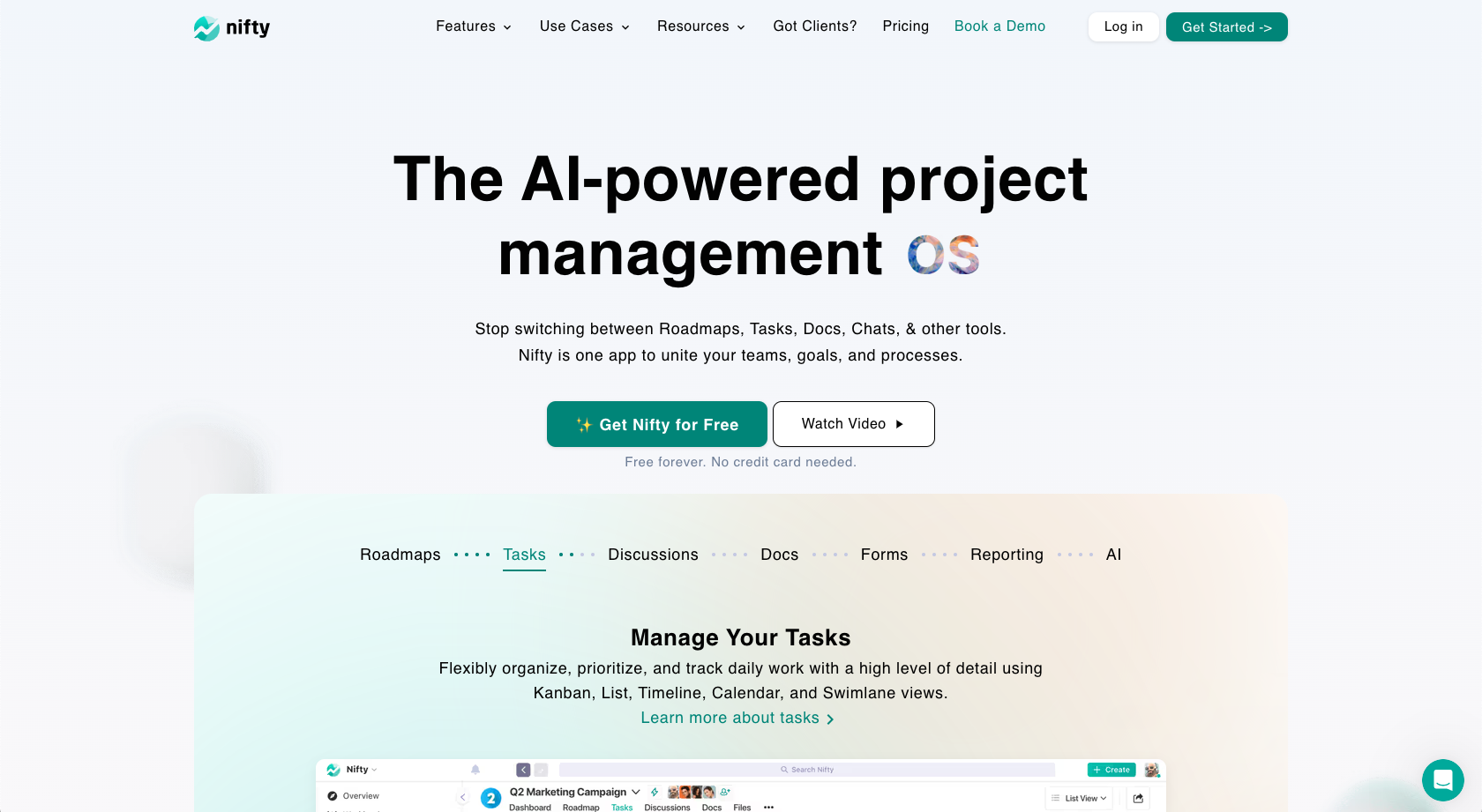










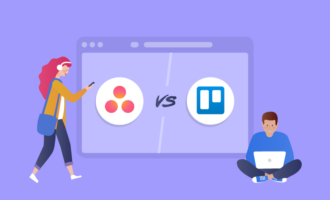





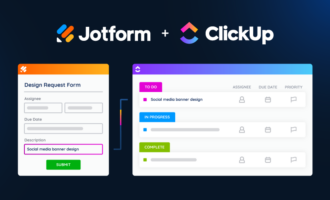


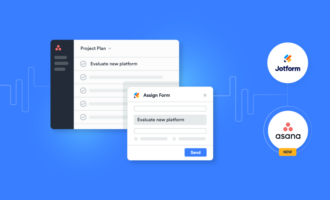

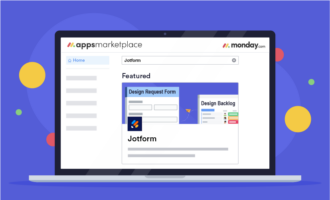
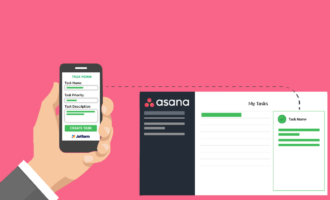








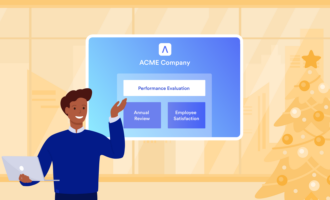
Send Comment: